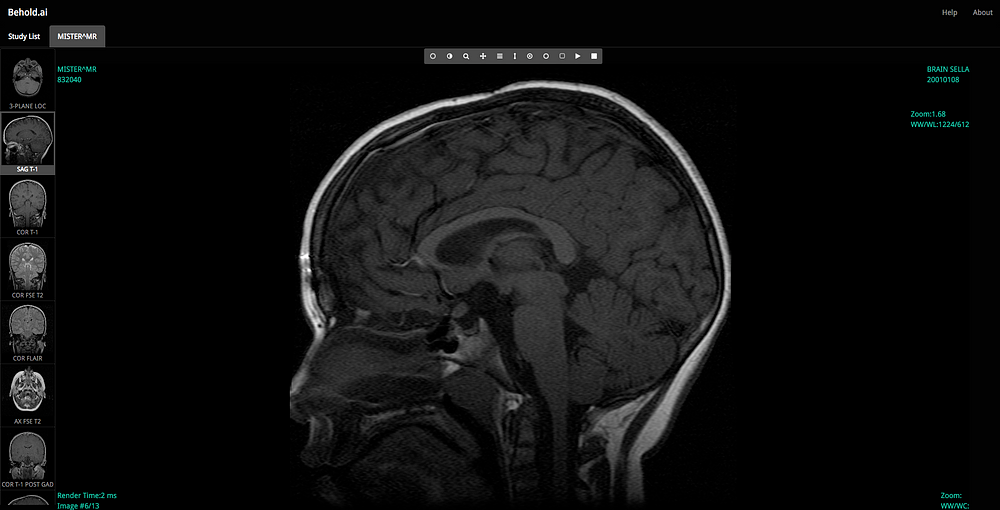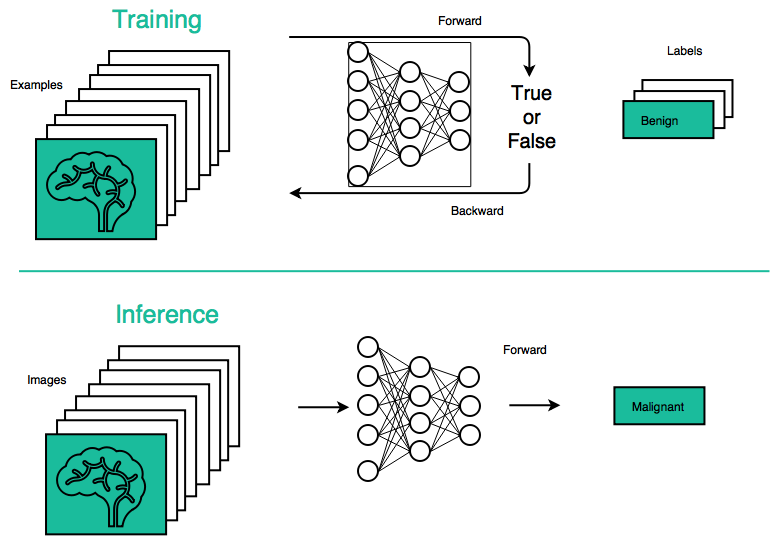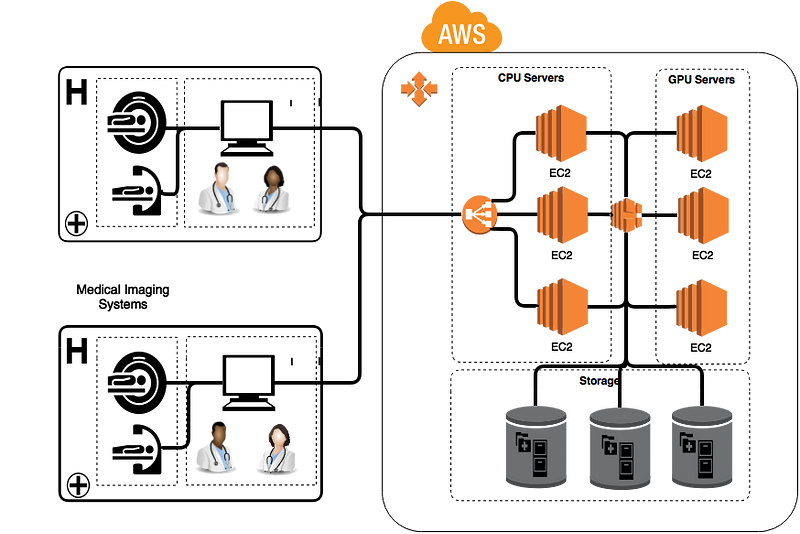
Behold.ai’s medical software uses cutting-edge artificial intelligence to help radiologists make better medical decisions.
In this post, we share our backstory and discuss how we are reimagining how radiologists diagnose patients, which allows healthcare providers to streamline operations. We also explain how we use Amazon Web Services (AWS) to power our services.
How It All Started
Behold.ai’s co-founder, Jeet Samarth Raut, is from Freeport, a small town in northwestern Illinois. His mother discovered a lump on her breast in 2006 and got a mammogram. The scan was read as negative for breast cancer, though that wasn’t the case. Fortunately, his family sought a second opinion, and treatment for his mother began immediately. Although everything worked out well in the end, the misdiagnosis could have had a catastrophic outcome. This situation led Jeet to think about the ways in which the process of parsing medical scans could be improved by providing tools for radiologists that help them make better clinical decisions.
Artificial intelligence has advanced to a point where it can be used to help radiologists identify abnormalities in medical images. In particular, the branch of AI known as deep learning has shown that computers can parse large volumes of data and, in the process, “learn” the salient features of images and find subtle patterns. Behold.ai empowers radiologists by providing suggestions based on prior training about similar cases, enabling radiologists to make better diagnostic decisions.
What Behold.ai Does
Behold.ai is an artificial intelligence-backed, computer-aided detection tool that integrates with existing picture archiving and communication system (PACS) software. Medical imaging technology — such as CT scans, MRIs, and X-rays — yields a lot of information that a radiologist has to analyze and evaluate comprehensively in a short time. In addition, a radiologist has to consider other factors besides the image and sometimes must operate under conditions of uncertainty. Behold.ai performs highly complex pattern recognition and highlights conspicuous abnormalities in medical scans and images such as lung nodules and cerebral aneurysms. Behold.ai can also be used in preventative medical checkups, such as a mammography. For example, Behold.ai can be used to detect breast cancer by evaluating suspicious structures, such as micro calcification clusters and hyper-dense structures in soft tissue. Our system seeks to support doctors, not replace them. Doctors are always responsible for the final interpretation of a medical image.
Behold.ai uses artificial intelligence to help radiologists make better medical decisions by performing pattern recognition. We use deep learning technology, which combines neural network architectures with massive computing power to automatically identify visual differences between healthy images and those with nodules, lesions, and other abnormalities.
The advent of deep learning has revolutionized the field of computer vision and machine perception. On a high level, deep learning involves a two-stage process:
- A neural network is trained by tuning its numeric weights based on experience — in other words, determining its parameters using labeled examples of inputs and desired output. This makes neural nets adaptive to inputs and capable of learning.
- A network is deployed to run inferences, such as using its previously trained parameters to classify, recognize, and generally process unknown but similar inputs.
Behold.ai uses a class of artificial neural networks called Convolutional Neural Networks to identify abnormalities in medical images. Neural Networks are composed of neurons arranged in a series of layers. ConvNets are specialized for image processing tasks and are inspired by the biological visual cortex.

Our technology works alongside existing medical imaging technology to provide suggestions to radiologists based on prior training. Radiologists are ultimately responsible for accepting or rejecting the image tags. The system takes this feedback to ultimately improve its accuracy and robustness as it encounters more examples. Behold.ai is capable of ingesting images from a variety of modalities such as MRIs, Ultrasounds, CT scans, and retinal images. Our system is capable of learning over an enormous amount of images.
Medical images can take a long time to be checked by radiologists, especially in rural areas that might not have a specialized radiologist working locally. Checking for accuracy is also an issue, with variability of agreement between an attending physician and radiologist being as high at 32%. Diagnoses have also been shown to be subjective and inconsistent. By utilizing computer vision/deep learning, we can help radiologists make better clinical decisions.
How Behold.ai Uses AWS to Do It
Behold.ai is architected to handle High Performance Computing (HPC) requirements while providing a HIPAA-compliant service. We harness the massive parallelism of high-performance GPUs hosted on AWS to speed up the process. Advances in GPGPU programming enable us to have a very deep convolutional network with hundreds of millions of parameters. This must all be done while strictly adhering to the privacy rules of HIPAA/HITECH. We were drawn by the leading-edge, security-oriented services and responsive expert support offered by AWS, which allow us to provide our clients with rock-solid patient data security.
We rely on a range of AWS services to keep our infrastructure running smoothly and the patient data safe:
- Amazon EC2 — EC2 provides the compute resources needed to run our backend service. Its elastic nature enables us to scale rapidly in response to requirements in computing resources. AWS is able to support our compute and memory-intensive algorithm requirements through its GPU instances, whose massively parallel capabilities and energy efficiency makes them state-of-the-art in training deep neural networks.
- Amazon CloudWatch — CloudWatch metrics and alarms allow us to monitor vital service statistics and warn system operations of potential and immediate problems.
- Elastic Load Balancing (ELB) — ELB automatically distributes incoming web traffic across our EC2-backed web servers.
- Elastic Block Store (EBS) — EBS provides persistent, highly available, fault tolerant block level storage for the image data. EBS encryption provides a secure means to store patient data at rest. Data is stored in low-latency SSD and provisioned IOPS SSD, allowing for I/O performance. The elasticity of EBS allows us to scale block storage as needed.
We use additional AWS security features to ensure that our services are impenetrable. For example, Identity and Access Management (IAM) enables us to use security groups to control access to our services and resources. We use encryption to ensure that data is transmitted securely to our servers.
As shown in the following architecture diagram, we use AWS to integrate with clinics and hospital systems though an unobtrusive workflow in order to help a radiologist make an informed decision.

After a patient has scans taken at a medical imaging center, the scans are sent to Behold.ai’s servers for real-time analysis. The images are then immediately sent back to the radiologist along with tags listing the ailments identified by Behold.ai’s pre-trained models. Radiologists then verify the suggestions and may accept or reject them. Behold.ai takes this feedback and retrains its models, therefore learning over time.
As we built our business, we had important technical challenges to consider, including how to scale rapidly, make a highly available service, and handle terabytes of data that is characteristic to medical images. AWS tools helped us build a scalable, high performance, and secure service.
The Future
We are in the process of scaling out Behold.ai through pilots across multiple healthcare systems. We are also collaborating with existing healthcare analytics and imaging companies. Behold.ai’s strength lies in having more high quality datasets to train our algorithms on so that we can identify a vast array of ailments. The pilots and collaborations enable us to rapidly obtain large and diverse datasets to validate our technology and benchmark our performance against existing solutions.
We’ve learned an incredible amount about technology and business through starting a company. In particular, we learned the value of collective networks. We were surprised by the 2nd and 3rd level connections people we knew had. We found 2nd and 3rd connections to be very useful proving domain expertise and regulatory information in a space that can be difficult to navigate independently.
AWS services will continue to provide us with the infrastructure to run our service and allow us to rapidly expand to handle the tremendous volumes of medical data we acquire while providing security and privacy for our clients. We are targeting lower cost, higher accuracy, and faster speeds as compared to existing and legacy approaches. The goal of Behold.ai is to bring unparalleled diagnostic outcomes for patients by adapting deep learning to medicine.
